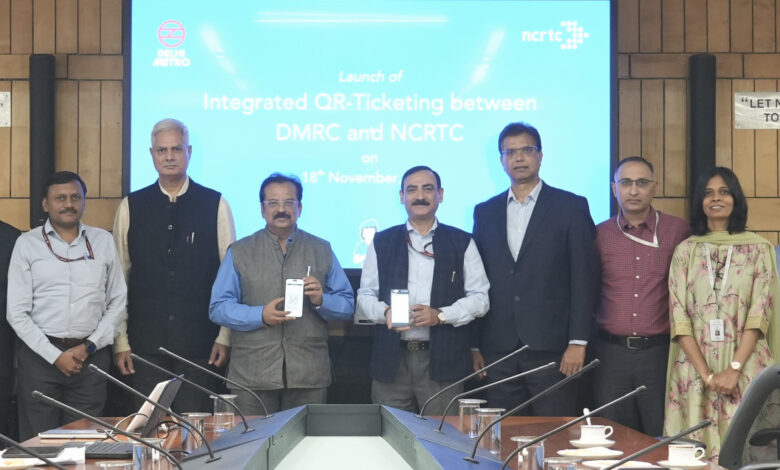Integrated QR-Ticketing System Launched by NCRTC and DMRC, Enhancing Travel Convenience Across Delhi-NCR

In a significant step towards improving commuter convenience, the National Capital Region Transport Corporation (NCRTC) and the Delhi Metro Rail Corporation (DMRC) officially launched their integrated QR-ticketing system on Monday, November 18, 2024. This new system will allow passengers to book tickets for both the Namo Bharat and Delhi Metro services simultaneously, streamlining the travel experience across the Delhi-NCR region.
The integration follows a Memorandum of Understanding (MoU) signed by both organizations in August 2024, aimed at creating a unified, digitally connected transportation network in the region. The launch event was officiated by Shalabh Goel, Managing Director of NCRTC, and Dr. Vikas Kumar, Managing Director of DMRC, who demonstrated the new system by booking tickets via their respective mobile apps.
With this new development, commuters can now book tickets for Delhi Metro services via the ‘RRTS Connect’ app and for Namo Bharat services via the ‘DMRC Momentum 2.0’ app. This seamless integration of both transport systems will provide a more cohesive and efficient travel experience for passengers.
The newly launched QR-ticketing system is part of the ongoing efforts to enhance inter-modal connectivity, making it easier for commuters to switch between the RRTS (Regional Rapid Transit System) and Delhi Metro. The two networks, with the RRTS offering regional connectivity and Delhi Metro providing intra-city services, together form an integrated and highly efficient transport system for the National Capital Region (NCR).
This collaboration is expected to encourage greater use of public transportation, aligning with the government’s “One India – One Ticket” initiative, which seeks to simplify the ticketing process across different transport modes. By combining metro and RRTS travel options into a single digital platform, the new system will improve convenience, save time, and reduce the need for multiple tickets.
In addition to streamlining the commuter experience, the integration of the two transport networks will also reduce congestion at stations, promote digital transactions, and support environmentally friendly travel options. With the 42 km RRTS corridor now operational and connected to the 393 km DMRC metro network, this initiative is set to transform the region’s transport infrastructure.
The launch of this system also builds on NCRTC’s earlier partnership with the Indian Railway Catering and Tourism Corporation (IRCTC), enabling passengers to book Namo Bharat train tickets alongside their metro tickets, further enhancing convenience and accessibility.
The initiative aligns with the objectives of the PM National Gati Shakti Master Plan, which aims to foster integrated infrastructure and seamless connectivity between various transport modes. By improving connectivity between Delhi Metro and RRTS, this project will contribute to reducing traffic congestion, promoting sustainable travel, and shaping the future of public transport in the region.
This integrated ticketing system is another step forward in NCRTC’s vision of providing a sustainable, efficient, and commuter-centric transport solution for Delhi-NCR, ensuring a more connected and greener future for the region’s millions of commuters.




